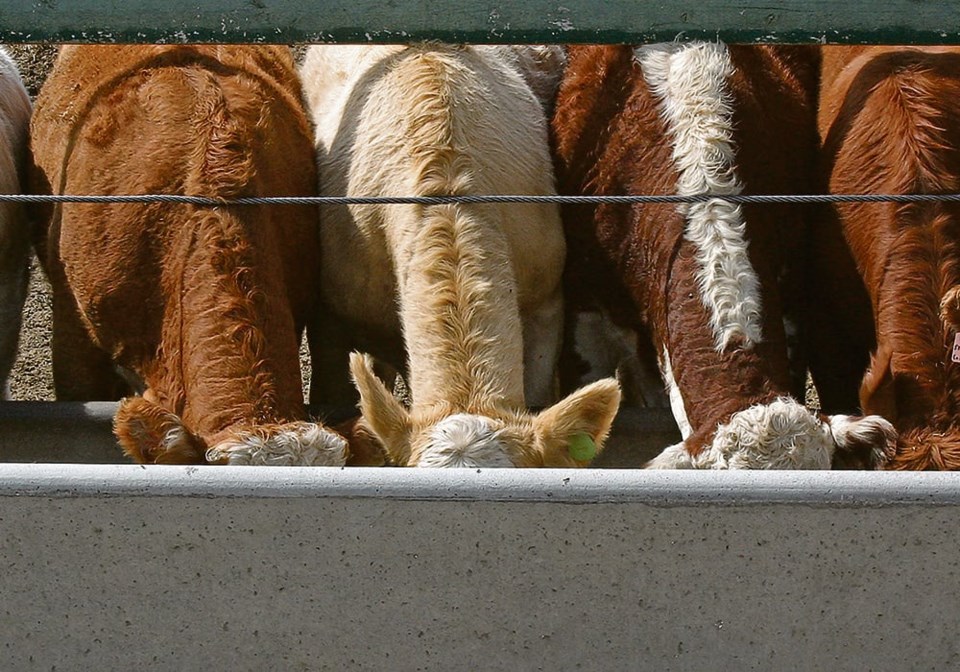SASKATOON — New technology could help the cattle industry better manage bovine respiratory disease, a veterinarian told the Saskatchewan Beef Industry Conference.
Dr. Emily Snyder, assistant professor at the Western College of Veterinary Medicine with a research focus on BRD, said current treatment methods have led to concerns about antimicrobial resistance.
Widespread treatment of all animals entering a feedlot, which is the population most at risk of developing BRD, with an antimicrobial has been shown to work but the practice could also result in selection of bacterial strains that are resistant.
“We’re thinking that if we can identify those animals that are particularly high-risk and just give those some metaphylactic treatment and then those that are at lower risk, not treating those, we might be able to reduce our drug use in that way,” Snyder said.
That’s where chute-side diagnostics come into play.
One tool in development is QScout BLD, a test that includes a blood sample on arrival at the feedlot with results within 30 seconds. By assessing the white blood cells in the sample, the test would allow producers to make animal health decisions.
Other possibilities include testing acute phase proteins for inflammation and infection and using nasal swabs for bacteria.
“Finally, this is sort of wild to think about, but some people are actually looking at doing breath analysis, where they use a machine to kind of sniff the breath of calves and determine what’s going on in their lung space,” Snyder said.
The effectiveness of vaccination upon arrival at the feedlot is questionable, she said. Vaccines work if an animal has a fully functioning immune system but transport stress may mean that system isn’t at its best.
Aside from shipping stress, cattle at the greatest risk of developing BRD are not weaned or weaned for less than 45 days, intact, and suffer stress from commingling.
As a result, feed intake is reduced, rumen function and digestion are decreased and a chronic increase in cortisol can cause immunosuppression.
“We also know stress increases colonization in the upper respiratory tract,” Snyder said.
She acknowledged there is some controversy over whether pre-conditioning cattle can help prevent BRD. Pre-conditioned calves have been weaned 45 days or more, castrated, trained to a feed bunk, vaccinated and de-wormed, dehorned and implanted.
Research into pre-conditioning in the United States looked at morbidity in calves after arriving at the feedlot and found these calves experience 27 to 60 percent less sickness. Snyder said one study found it can also reduce treatment costs by $27 per head or more. Pre-conditioned calves gain better than those that aren’t, and do tend to graze better, she added.
But Snyder acknowledged it can be challenging for the cow-calf producer to find the benefit in pre-conditioning because they have to hold calves longer and there may not be a premium for that.
“I would posit here that the profit in preconditioning is weight. By holding those animals an extra 45 to 60 days, feeding them, getting an implant in them, you’re able to capture that extra gain.”
Detecting BRD in the first place is generally done by observation. Cattle are prey animals, however, and will try to hide signs of disease. Only 62 percent of the time are calves with BRD accurately detected this way; similarly, ruling out BRD visually is only accurate 63 percent of the time.
“We’re just not good at finding those sick animals based on visual observation,” she said.
A 1996 study found 72 percent of steers followed from feedlot to slaughter had lung lesions but only 35 percent had actually been identified, pulled and treated.
Snyder said precision livestock farming using technology to identify the calves will help. There are behaviour assessment systems that allow for continuous monitoring of movement and time at the feed bunk. Ear tags with lights that change colour if a calf develops a fever, pedometers to measure movement, collars, GPS trackers and possibly even microchips are all possibilities.
Ultrasounds aren’t reliable on large animals, she said, because they only see the lung surface and it can be hard to differentiate between old and new lesions.
The Whisper veterinary stethoscope takes the human factor out of listening to the lungs to detect BRD.
“This is placed on the chest of the calf, the computer listens and there’s an algorithm that decides if that calf needs to be treated or not,” Snyder said.
Research using this tool is underway at the University of Saskatchewan.
Snyder also said better detection and treatment are critical with the increasing antimicrobial resistance.
“Obviously controlling BRD is becoming harder. We’re starting to see a lot of public concern about our use of antimicrobials, which is really driving marketing decisions,” she said. “Those animals that aren’t 小蓝视频 treated are certainly suffering and that’s a concern.”
Drug companies aren’t interested in developing new antibiotics, and using drugs appropriately is critical.




